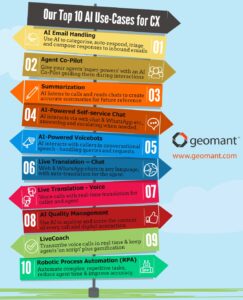If most companies have learned anything from the last two years, it’s that you can never be too prepared. Even the most cautious organizations saw their worlds turned upside down when the pandemic hit. If a business didn’t have a digital strategy or cloud-based approach, it needed to rapidly pivot its entire business model or risk closing the doors for good.
Though the pandemic threats are beginning to subside in some areas, today’s business leaders need to ensure they’re taking the lessons learned with them into the age of digital transformation. Implementing a comprehensive business continuity strategy is now a necessity.
Here’s what you need to know about ensuring business continuity in one of the most valuable parts of your business: the contact center.
Creating Business Continuity: Analyzing your Ecosystem
A business continuity strategy involves protecting all the critical components of your business against the potential side-effects of sudden changes. In the contact center, this means ensuring you can continue to deliver exceptional omnichannel service to your clients, regardless of what might happen.
One of the first steps in enabling business continuity is assessing your current environment. Make a list of all the essential elements of your contact center, from your IVR to your telephony strategy, and ask yourself how they would be affected by another catastrophic event (like the pandemic, natural disaster, or even a power outage).
Doing this will help you understand the potential threats facing your business and the side-effects of crucial components in your contact center suddenly not working as they should. For instance, some of the things you may need to think about include:
Business Telephony
Many of the components of a traditional contact center are clunky tools that require people to operate in a specific environment. For instance, typical telephony systems have previously used desk phones and PSTN systems to connect customers and companies via voice. Switching to a cloud-based contact center can help to bypass this issue.
With a contact center in the cloud, business leaders can provide their employees with access to all the tools they need to communicate with clients wherever they are. Businesses can still leverage all the benefits of high-quality voice calls without team members tied to a desk.
With a contact center in the cloud, companies also have more freedom to offer other modes of communication in the same landscape. Omnichannel CCaaS tools support everything from video conferencing to messaging and SMS.
Employee engagement and collaboration
How do you currently keep team members in your workforce aligned and unified towards the same business goals? Are all your meetings hosted in person? If your staff couldn’t come into the office tomorrow, would they still be able to work effectively as a team?
Tools like Microsoft Teams can make it easier to align your employees in a digital environment, so they can stay connected wherever they are. Thanks to direct routing functionality, it’s also possible to combine your contact center with your environment for internal communication and collaboration. It creates a more convenient end-to-end environment for tracking team conversations and business processes.
You can even implement cloud-based tools with your contact center and collaborative environment to help with motivating your teams. For instance, dashboards and digital wallboards are great for engaging your staff and keeping groups of employees on track towards critical goals.
Data management
To deliver exceptional customer experiences in today’s competitive business landscape, companies need to gather valuable information about their target audience and their previous interactions with the brand.
In the past, data was often stored on-premises for both security and compliance purposes. Unfortunately, in an unpredictable environment, where the office might not be available in every situation, companies need a more flexible approach to data management.
A cloud-based solution enabled through your digital contact center could be the perfect option. Leading vendors can offer data sovereignty solutions, so companies can maintain more control over where contact center data is stored. You can even set your AI and chatbot tools in the contact center to store and exclude specific information from each critical conversation.
With integrations between your contact center and CRM, your customer can also track more of the customer journey from start to finish and use it to deliver personalized experiences.
Is Your Contact Center Ready for Anything?
Business continuity is a crucial consideration for any business in a post-pandemic landscape. Fortunately, a cloud-first approach to the contact center can give you the flexibility you need to survive unpredictable events. With the agility of the cloud, it’s easy to change your business strategy and support team members wherever they are.
Cloud technology also gives companies the power to adapt their contact center solution to suit evolving customer service trends. Discover what you can do to future-proof your business with Geomant today.











